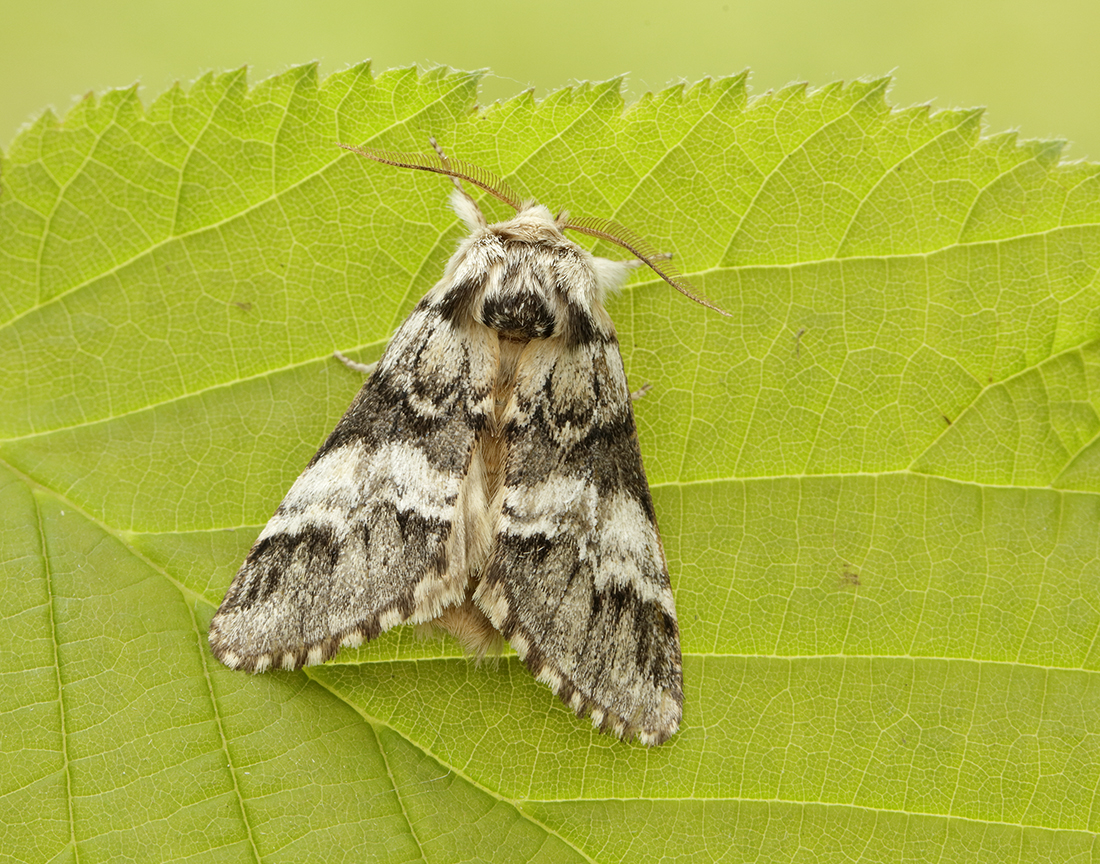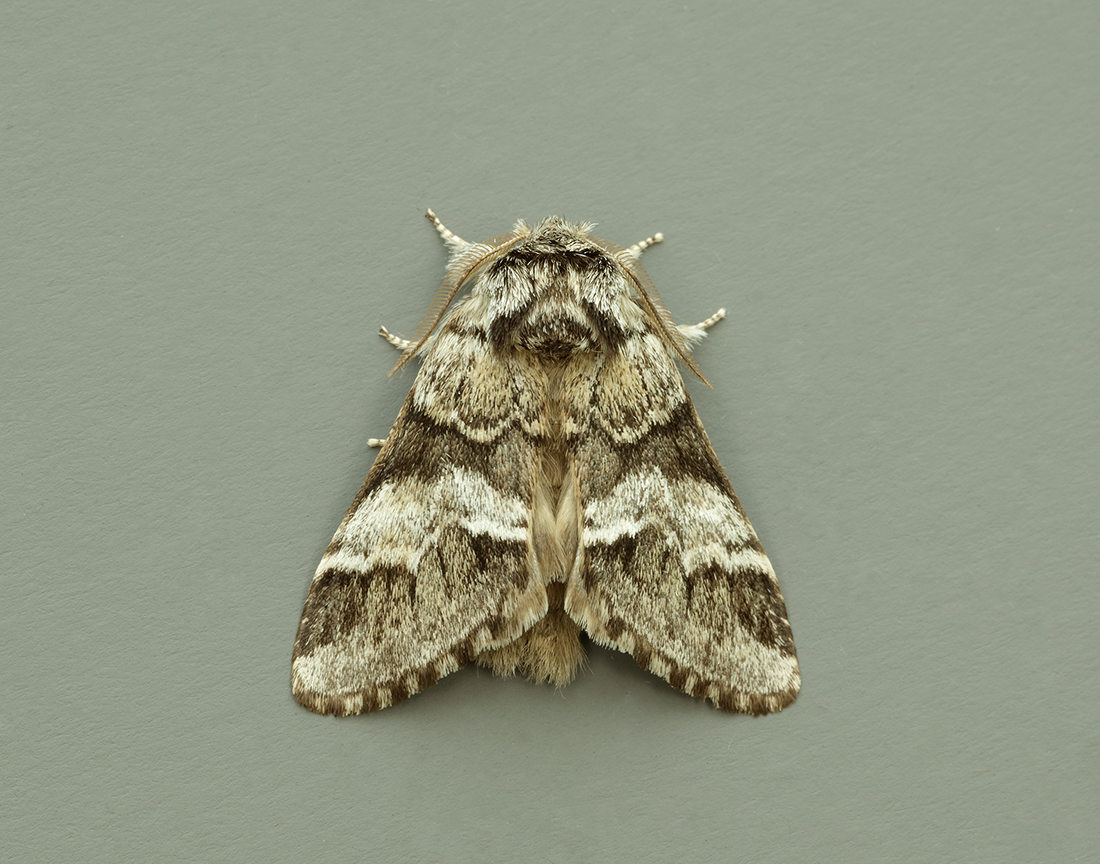Identification
Very distinctive and with the omission of the dark comma mark on the forewing, should separate it from Lunar Marble Brown.
Life cycle
One generation. Overwinters as a pupa underground in a cocoon around the foodplant. Larvae are present late June to early September, probably high up in the tree canopy.
Larval foodplants
Pedunculate Oak and Sessile Oak.
Habitat
Mature oak woodlands.
History 1860-2010
J. G. Gordon took a nearly full-fed larva on a small alder on 18th July 1905 as recorded by R. S. Gordon (1913). Two specimens came to light by the Malzie Burn, Corsemalzie, on 30th May 1911. Cunningham (1947) in the Transactions recorded one at light on 31st May 1947 in Mabie Forest which is the first for Kirkcudbrightshire. The first for Dumfriesshire followed four years later when two were caught at Tynron on 21st June (Duncan & Cunningham 1952).
Gatehouse of Fleet in 1975 and Waterside Mains at Keir in 1976 with one record each from their Rothamsted stations, was a poor return and with the Mabie Forest station later on during 1989-93, producing three records, shows how scarce it is. From 1984 and from the next two years it was trapped singly on the Hensol Estate.
Cally Woods is obviously its stronghold, providing seventy records in four years from 1997. The other regular trapped sites during 1993-2010 were at Kirkton (10 records), Durisdeer (7 records), Forest Moor (3 records) and Old Torr area (four records) produced most of the records, with just nine from other scattered sites.










